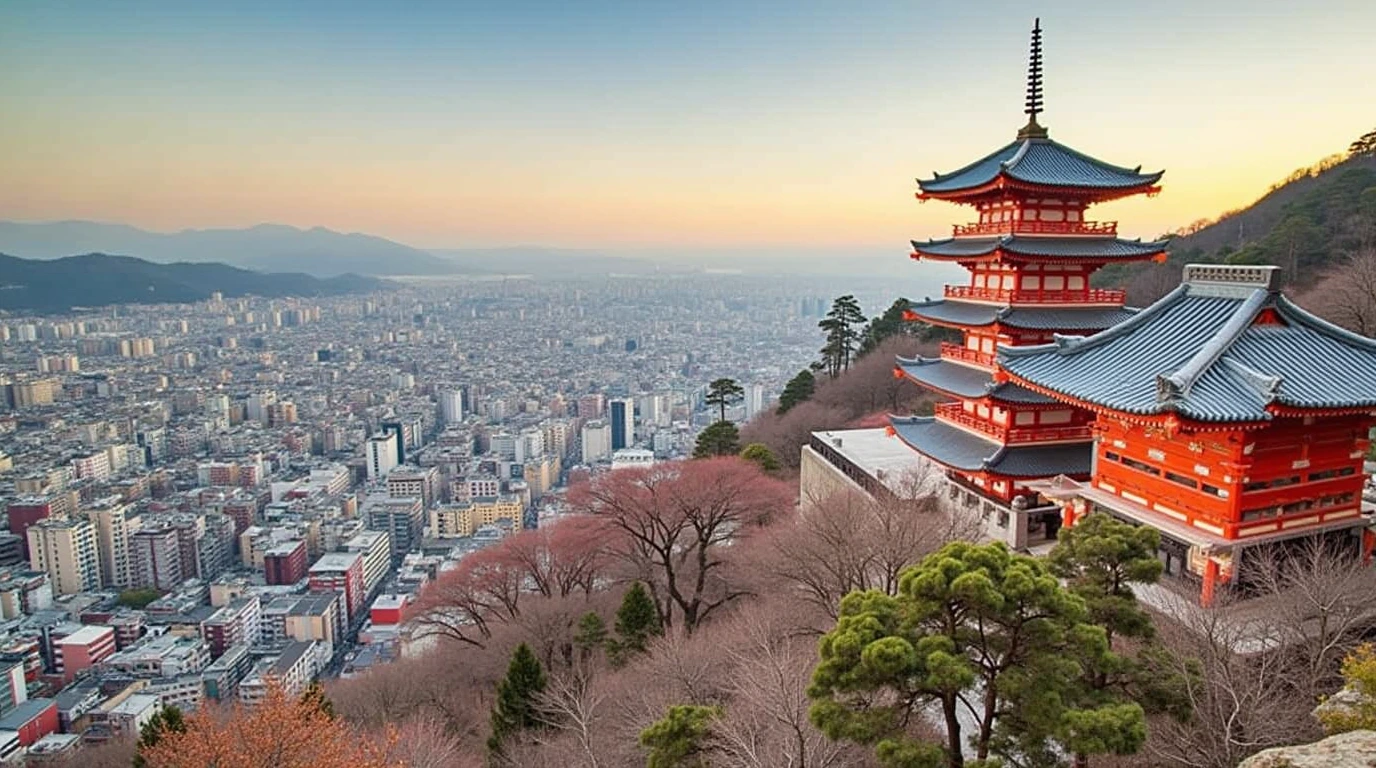The Ultimate Guide: Best Time to Visit South Korea

Table of Contents
Best Time to Visit South Korea, with its vibrant culture and stunning landscapes, offers unique experiences throughout the year. Understanding when to visit can significantly impact your travel experience, from witnessing the iconic cherry blossoms to avoiding the challenging monsoon season.
Spring: Nature’s Grand Awakening (March to May)
Spring emerges as the prime time to visit South Korea, particularly from late March through May. During this period, the country transforms into a photographer’s paradise as cherry blossoms paint cities and countryside in delicate pink hues. The flowering typically begins in late March in southern regions like Jeju Island, gradually moving northward to reach Seoul by early April.
Beyond the cherry blossoms, spring brings comfortable temperatures ranging from 15°C to 22°C (59°F to 72°F), perfect for exploring outdoor attractions. The Yeon Deung Hoe Lotus Lantern Festival in early May offers visitors a chance to experience Korean Buddhist culture through stunning lantern displays and traditional performances.
Visit South Korea
Autumn’s Cultural Symphony (September to November)
Fall rivals spring as the ideal season for visiting South Korea. October stands out as a particularly magnificent month, featuring mild temperatures and stunning fall foliage. The autumn colors typically begin appearing in late September at higher elevations, reaching their peak in Seoul and other major cities by late October or early November.
During this season, visitors can enjoy cultural events like the Busan Fireworks Festival in October, which illuminates the coastal city’s skyline with spectacular displays. The Seoul Lantern Festival in November transforms the Cheonggyecheon Stream into a magical corridor of light and artistry.
Summer Rhythms and Monsoon Melodies (June to August)
Summer presents a mixed bag for travelers. June begins pleasantly but marks the onset of the monsoon season. While hiking opportunities abound in early June, travelers should prepare for occasional rainfall and increasing humidity.
July proves challenging for tourism, with peak monsoon conditions bringing heavy rainfall and humidity levels reaching their highest. However, August offers a revival with sunny skies perfect for beach activities, particularly on Jeju Island. Be aware that popular destinations become crowded during this time as locals enjoy their summer holidays.
Winter’s Enchanting Embrace (December to February)
Winter in South Korea brings distinctive experiences, though temperatures can drop significantly, especially in Seoul. December sees temperatures plummet, making outdoor exploration less comfortable. However, winter sports enthusiasts might appreciate the numerous skiing opportunities in destinations like Pyeongchang.
Monthly Festival Calendar and Cultural Highlights
Each month in South Korea offers unique experiences: March introduces spring’s warmth with early cherry blossoms in southern regions. April combines peak cherry blossom viewing with comfortable temperatures, though popular sites can become crowded. May delivers ideal conditions for outdoor activities and hiking, particularly on Jeju Island.
Regional Weather Patterns and Climate Guide
Weather patterns vary significantly across South Korea’s regions. Seoul experiences more extreme temperature variations, with hot summers and cold winters. Busan, being coastal, enjoys milder winters and cooling sea breezes during summer. Jeju Island typically maintains warmer temperatures year-round but experiences significant rainfall during the monsoon season.
Expert Travel Tips and Seasonal Recommendations
To maximize your Korean adventure, consider these expert tips: Book accommodations well in advance for cherry blossom season (late March to early April) and peak autumn foliage (late October to early November). Avoid traveling during Lunar New Year and Chuseok unless experiencing these cultural celebrations is a priority, as transportation becomes challenging and many attractions close.
Planning Your Perfect Korean Adventure
For optimal hiking experiences, target spring or fall months when temperatures remain moderate and rainfall is minimal. Photography enthusiasts should prioritize April for cherry blossoms or late October for fall colors. Beach lovers will find August ideal despite crowds, while winter sports enthusiasts should plan for December through February.
Remember that shoulder seasons (early spring and late fall) often provide the best balance of good weather, reasonable crowds, and cultural experiences. These periods allow for comfortable exploration of both urban and natural attractions while avoiding peak tourist congestion.
This guide aims to help you plan the perfect Korean adventure by aligning your travel dates with your interests and comfort preferences. Whether you seek cultural immersion, natural beauty, or festive celebrations, choosing the right time to visit ensures a memorable experience in this fascinating country.
There are no reviews yet. Be the first one to write one.








One Comment
Comments are closed.